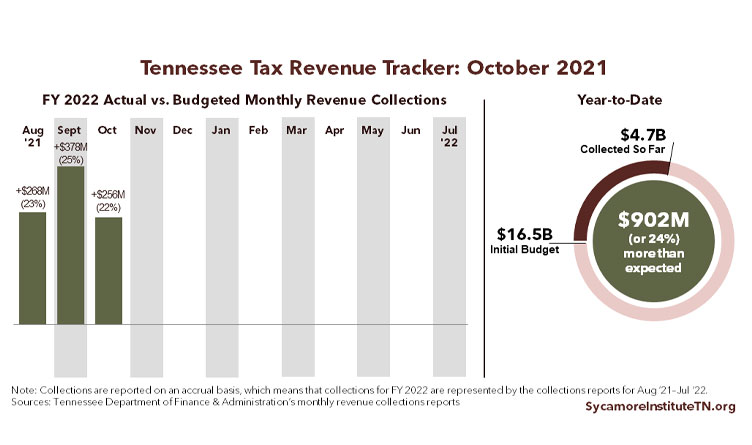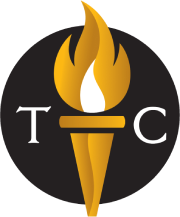Image Credit: Sycamore Institute
The Center Square [By Jon Styf] –
The Tennessee State Funding Board was told Wednesday inflation will continue to rise quickly, sales tax revenue cannot continue at its current trend and the state should remain conservative in its revenue estimates.
The board is in the midst of evaluating state tax revenue in order to adjust fiscal year estimates.
The Sycamore Institute, a nonpartisan policy group, has estimated Tennessee could have more than $3 billion in surplus to allocate next year even after spending $884 million in incentives for Ford to open a facility on 3,600 acres of state-owned land near Memphis to build electric trucks.
State sales tax revenue has continued to rise and is expected to amount to $11 billion in 2021, $12.1 billion in 2022 and $12.4 billion in 2023, according to the University of Tennessee’s Boyd Center for Business & Economic Research.
“People can only redo their kitchen so many times or buy so many Pelotons,” Dr. William Fox from the Boyd Center said. “As people start shifting their behavior back to normal, the sales tax numbers will go down.
“This (sales tax trend) is not sustainable and not going to continue. It’s not if but when a rebalancing of spending will take place.”
Fox’s presentation Wednesday showed an estimate of $17.8 billion in total revenue collections for Tennessee in 2021, $19.5 billion in 2022 and $19.9 billion in 2023.
Among the topics discussed Wednesday were supply chain and labor market issues. Laurel Graefe, regional executive at the Nashville branch of the Federal Reserve Bank of Atlanta, said labor force issues were long expected to occur as so many Americans reached retirement age and, before the COVID-19 pandemic, the largest question was why it had not yet occurred.
Graefe’s presentation showed consumer inflation rose 6.2% from October 2020 to October 2021.
A Duke University study Graefe cited shows businesses’ largest concerns are labor supply and supply chain, rather than demand or sales. The same study showed 70% of firms have been impacted by supply chain issues. Those issues are expected to continue through 2022 and into 2023.
Graefe called the labor force shift during the pandemic the “largest shift in 30 years,” including the pace of job growth, shift of workforce demographics and behavior around retirement.
*** Click Here to Support Conservative Journalism in Tennessee. We can’t bring your articles like this without your support!***
Department of Finance and Administration Commissioner Butch Eley asked several presenters about the causes of the workforce gap with unemployment down.
Fox estimated the unemployment rate will go below 4%, though the labor force participation rate remains lower than before pandemic.
“We end up with a bigger challenge getting people back into the labor force going forward,” Fox said. “Only Knoxville has more workers today than it did in September two years ago.”
The board will reconvene at 2 p.m. Nov. 23.

About the Author: Jon Styf, The Center Square Staff Reporter – Jon Styf is an award-winning editor and reporter who has worked in Illinois, Texas, Wisconsin, Florida and Michigan in local newsrooms over the past 20 years, working for Shaw Media, Hearst and several other companies. Follow Jon on Twitter @JonStyf.





